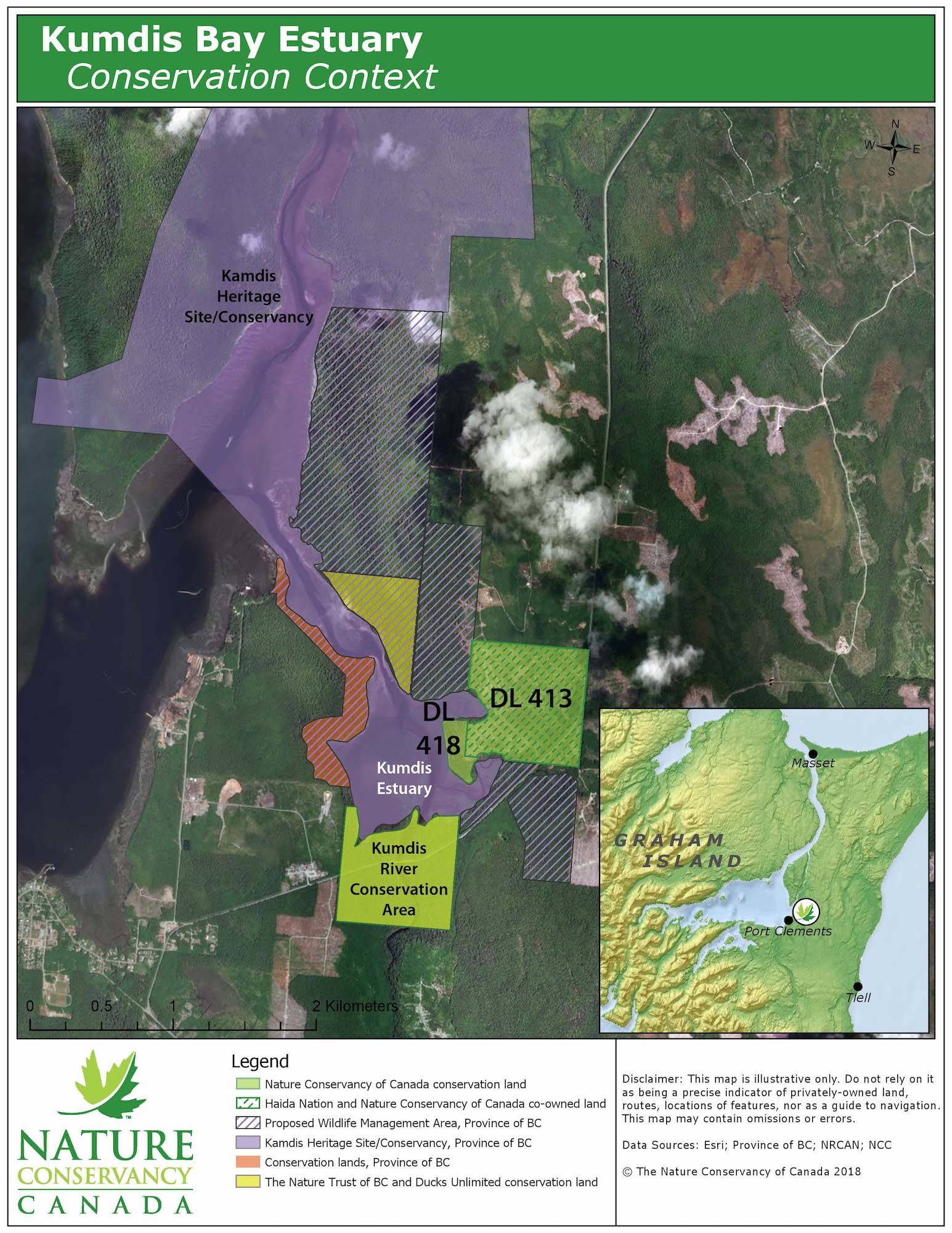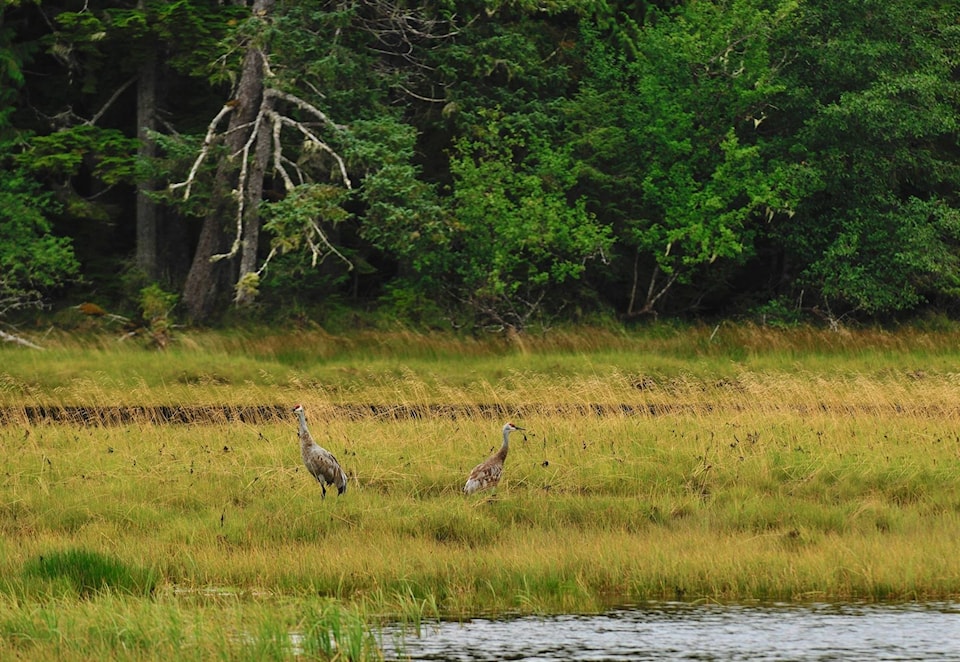In court, the biologist called it a “fish factory” — a rare wetland by Kumdis Bay with varied streams, tidal flats, and shaded water that was once ideal for raising fish.
Now, eight years after those fish-bearing streams were ruined by illegal logging, the wetland will be restored by the Haida Nation and the Nature Conservancy of Canada (NCC).
“Given the cultural and ecological heritage that was lost by logging Kumdis, the prospect of restoring the area lets us imagine what it will become, once again,” said kil tlaats ‘gaa, Peter Lantin, President of the Haida Nation, in a press release.
In January, a 140-acre property along the northeast side of Kumdis Bay was transferred to the joint ownership of the Haida Nation and the NCC. The east side of the property borders the highway, and is about 3 km north of Port Clements.
On Feb. 2, the NCC also bought a smaller property beside it that reaches out into Kumdis Slough and is forested with old-growth Sitka spruce and western red cedar.
According to the NCC, they were the last two parcels of land along the estuary that were not already under some form of extra environmental protection.
“Our collective efforts to protect and restore these lands on the Kumdis Estuary come from a recognition that nature and culture are inextricably linked,” said John Lounds, president and CEO of the NCC.
“This project represents an important contribution to global goals for conservation, and recognizes that damage to our natural lands is an unacceptable loss for a community, a culture and local ecology.”
The 140-acre parcel, listed as District Lot 413, was previously owned by a local company, Gwaii Wood Products Ltd. The company failed to make sure its two contractors, I. Crosby and Howe Sound Forest Products, followed environmental laws when it had the area logged in 2010.
RELATED: Firms face fines, bans for destroying fish habitat near Kumdis Bay
Besides a $120,000 fine, the judge in the resulting court case ordered Gwaii Wood Products to pay a further $400,000 towards Haida Gwaii conservation projects, or to donate its Kumdis Bay property to a nature conservancy.
Even before they finally decided to log it and sell it for farmland, the directors of Gwaii Wood Products had been in purchase talks with the NCC.
During the trial, a federal fisheries biologist, Renny Talbot, said it could take centuries for the wetland to recover on its own — the logging ruined habitat with downed trees, haphazard roads, and poorly built stream crossings.
Haida Fisheries and Fisheries and Oceans Canada are now planning major ecological restoration work in the area. Along with three species of salmon, the lands provide habitat for the endangered northern red-legged frog and two threatened species: the Haida ermine and the marbled murrelet.
Funding for the conservation project came from the Canadian government’s Natural Areas Conservation Program, the Sitka Foundation, the Karen and Fred Green Fund (through the Vancouver Foundation), Anthony Paine and Susan Collacott, MGSP Yacht, and Geoff and Karen Cowper.
Funding was also provided by the U.S. Fish and Wildlife Service, through the North American Wetlands Conservation Act.

